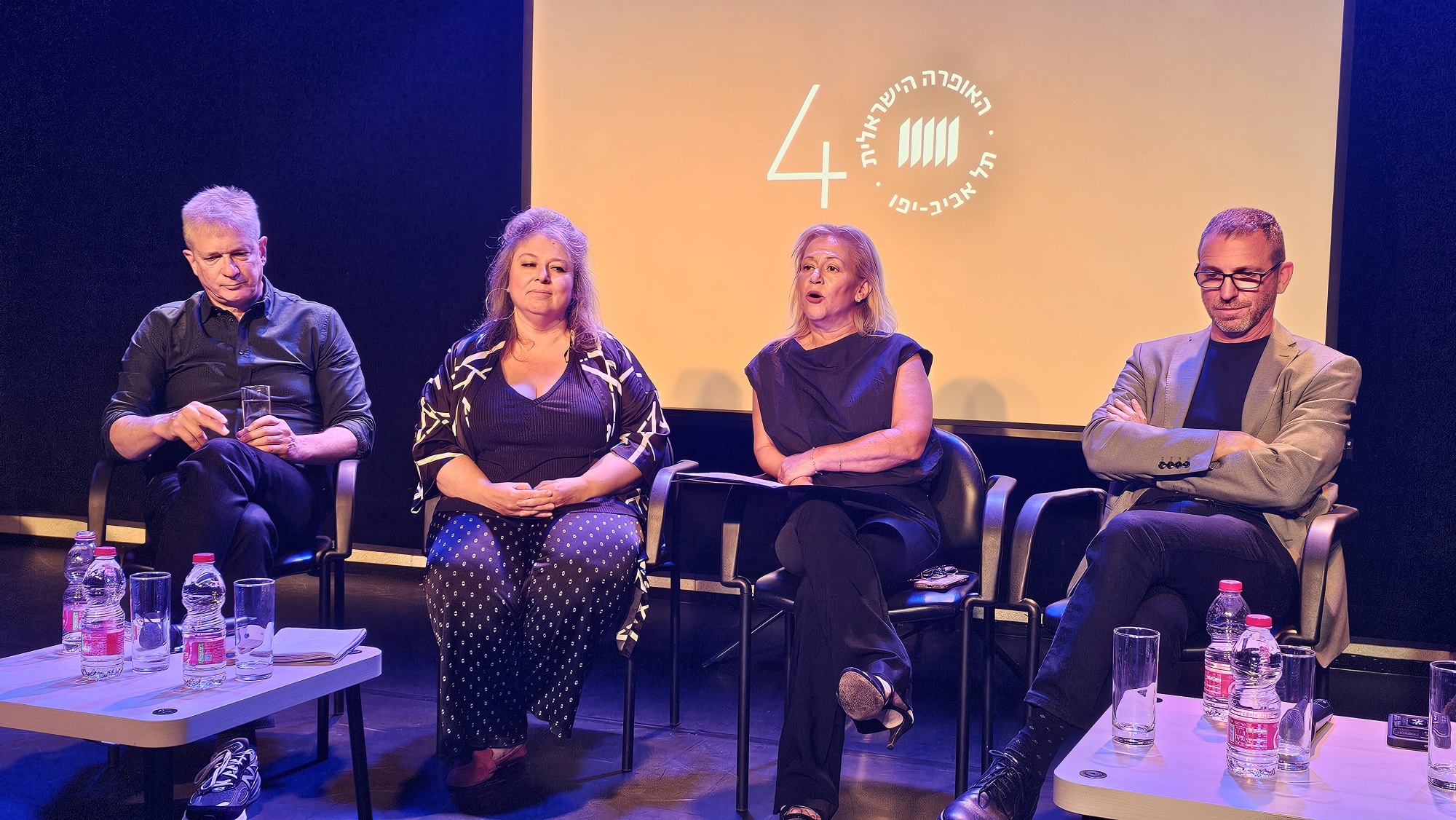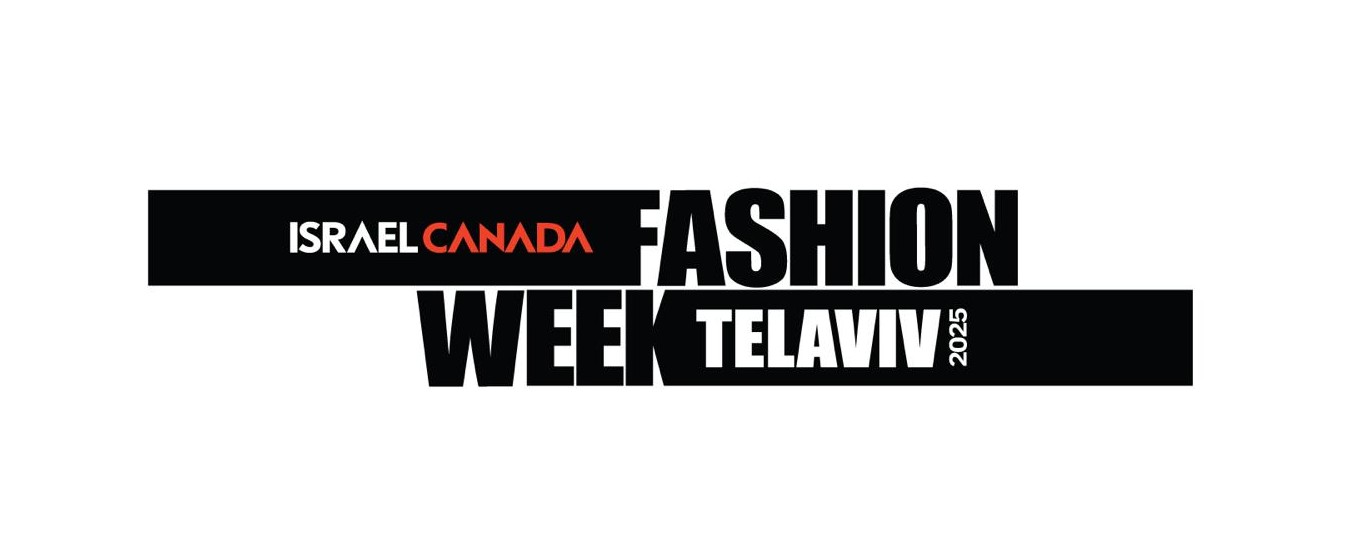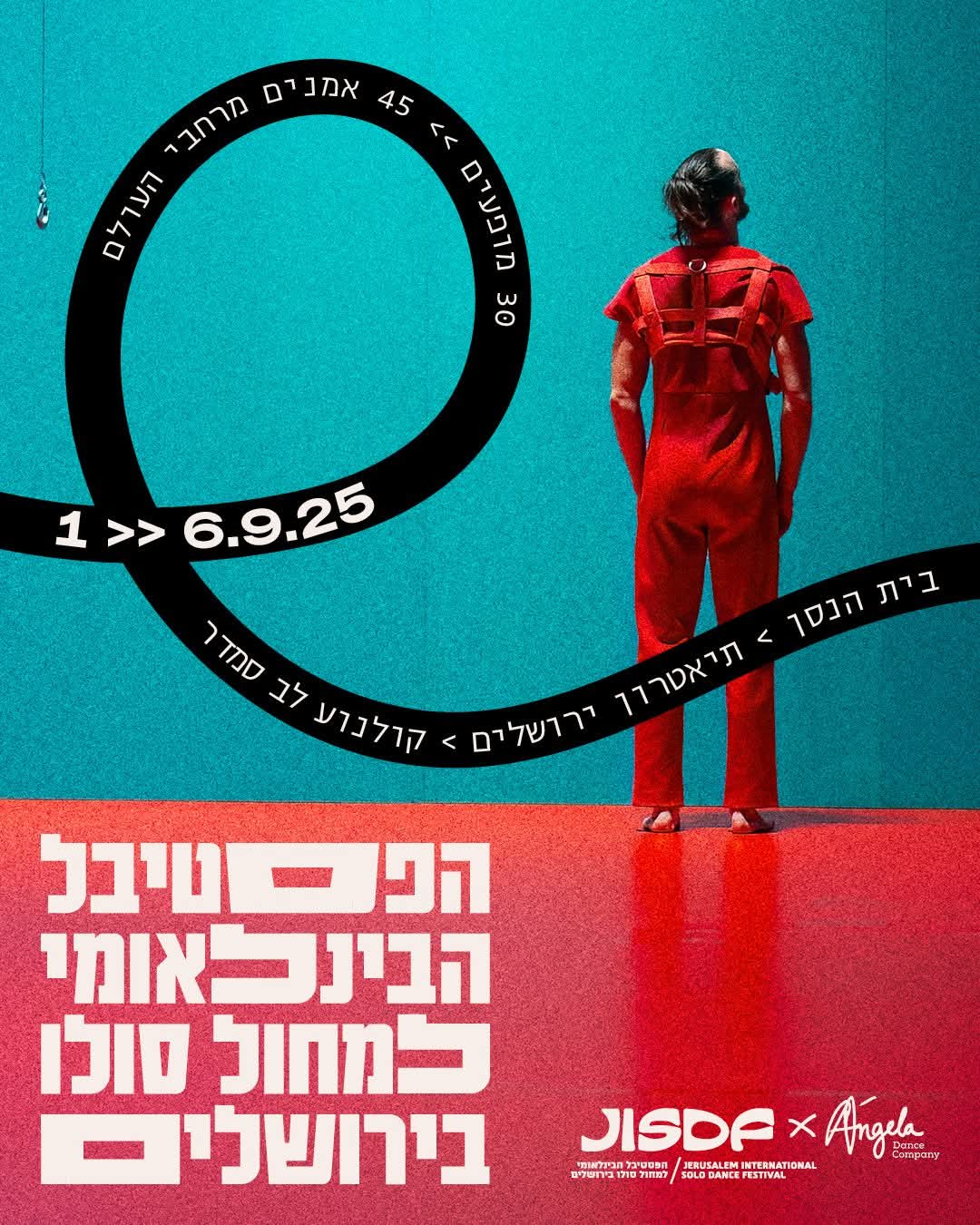Art & Culture
- Details
- Written by Silvia Golan & Stephen Abrahams

A season that looks back with pride and looks forward with a renewed commitment to artistic creation at the highest level.
And with a significant cultural discourse, created from an Israeli perspective and part of the international opera scene.
Its programming includes: Dido Aeneas, Iolanta, The Dybbuk, The Magic Flute, Salome, Nabucco, and Tosca.
Tali Barash-Gottlieb, General Director of the Israel Opera:
"It is a great thrill to inaugurate a season that will celebrate Israeli opera and a wonderful opportunity to thank the artists, the creators, the wonderful backstage team, and the audiences who lovingly accompany us. For four decades, we have walked together on a path of unwavering artistic excellence, international activity, the development of young artists, and original Israeli creation. And this is just the beginning!
At a time when Nechama seems to be more active, we have decided to celebrate its 40th anniversary with various social, educational, and community initiatives across the country, which will give the season a new dimension of meaning." Israel Opera Season Opening Video | 40th Season
https://youtu.be/5Lqx96OpeCc?
The 40th Season reflects this trajectory: a season filled with Israeli talents who have grown up in opera and who collaborate with world-class artists, directors, and conductors.
The Israel Opera considers education, community, and shared art as integral parts of its cultural mission. In its 40th anniversary, it will expand its educational and social activities, open its doors to new audiences, and continue to foster the training of the next generation of opera artists in Israel.
The 40th Season will open in November 2025 and will include seven spectacular productions:
The Israel Opera is proud to open its 40th season with a magnificent production of Henry Purcell's "Dido and Aeneas," the first opera presented at the Israel Opera since its founding in 1985, conducted by Hanan Snir.
Now, four decades later, it returns to the stage in a world premiere directed and designed by Stefano Poda (Russell, Faust, The Tales of Hoffmann), who creates a visual world richly inspired by Greek mythology and blending Baroque and Gothic styles. Directed by Stefano Poda | Directed by Gerd Amlung
"Dido and Aeneas" tells the story of the Queen of Carthage, who falls in love with the Trojan hero Aeneas, but is forced to confront dark forces seeking to separate them.
In Purcell's hands, the mythological story has become a fierce struggle between good and evil, between the power of love and the angels of destruction. And as in opera, the expected victory of the hero (Aeneas) is no consolation for the tragic death of the heroine (Dido). Purcell's moving and precise music is considered one of the cornerstones of English opera, headlined by Dido's immortal lament, "Earth," in "When I Lie."
The production celebrates the wonderful talents that have emerged in Israeli opera in recent years, and all its soloists are graduates of the Israel Opera's Meitar Opera Studio.
Featuring the Barracuda Orchestra and the Israel Opera Chorus, conducted by Itai Berkowitz. November 16-28, 2025.
For the first time at Israel Opera: "Iolanta" by Pyotr Ilyich Tchaikovsky. Directed by Shirit Lee Weiss | Directed by Dan Ettinger.
The Israel Opera will present a new original production of "Iolanta," the last opera written by Tchaikovsky, directed by Shirit Lee Weiss (Mothers, Hanoch Levin - The Opera) and conducted by Dan Ettinger, Music Director of the Israel Opera. A team of leading Israeli designers—Adam Keller (set design), Ole Shevchov (costumes), and Nadav Barnea (lighting)—created a world for Iolanta's story that combines a poetic appearance with a deep psychological connotation. The work tells the story of the blind princess Iolanta, who grows up in an isolated castle, while her protective father prevents her from learning the truth about her blindness and from exposing herself to the world.
An unexpected encounter reveals new feelings in her and awakens her longing to discover the truth.
This is a story of innocence, love, and the search for the inner light found within every person. From January 18 to 28, 2026.
Ido Riklin, author of the opera libretto, has created a new version of the story of the impossible love of Leah and Hanan, the heroes of S. An-Sky's classic work. Riklin's heroes struggle between faith and passion, between tradition and personal freedom, and pay with their lives for the society they live in's failure to accept free choice. The music, written by award-winning composer Yosef Bardanashvili, connects Jewish tradition with the complex psychological world of the opera's heroes, moving from moments of joy to the depths of lost souls. The finest soloists in Israeli opera participate in this grand production, with the Opera Orchestra, the Israel Symphony Orchestra Rishon LeZion, and the Opera Chorus. February 18-25, 2026
Wolfgang Amadeus Mozart's "The Magic Flute." What is it about this immortal opera that keeps us coming back to it again and again? Is it the eternal struggle between good and evil? Is it the longing for love that finds its answer at the end of the work? Or its magical imagination and humor? And perhaps it's the ingenious music Mozart created, which captivates children and adults alike? The answer is probably all of these and more, because it seems this masterpiece hides countless layers. In the 40th season, we decided to return to this beloved piece and discover more about the story of Pamina and Tamino, Papageno and Papagena, the Queen of the Night, and Sarastro. "The Magic Flute" has not left opera stages around the world for over 230 years, a testament to the power of a masterpiece to move and touch every person.
Conductor Alexander Joel returns to Israeli opera to lead soloists from Israel and abroad, with the participation of the Rishon LeZion Opera Orchestra, the Israel Symphony Orchestra, and the Israel Opera Chorus. March 13-26, 2026
'Salomé' by Richard Strauss. One of the most daring and powerful operas in the world repertoire returns to Israeli opera stages in the acclaimed version and direction of Itay Tiran and Dan Ettinger. The work, based on the play by Oscar Wilde, is set in Herod's court and centers on Salomé, a young and enigmatic princess who refuses to submit to the laws of the male world and is willing to pay any price for her desire. Itai Tiran and Renana Raz (the production's choreographer) created a world filled with beauty and horror with Strauss's music, a world where sensuality transforms into violence, where Salome cries out to challenge not only the existing order, but also her father, the king.
Yoav Cohen's stunning video work brings the image of the moon to life and makes it an active actor: a red moon that brings destruction.
Featuring soloists from Israel and abroad, and the opera orchestra, the Rishon LeZion Israel Symphony Orchestra. May 6-17, 2026
"Nabucco" by Giuseppe Verdi. Conducted by André Heller-Lopez | Conductor: Maestro Carlo Montanero. It's impossible to celebrate 40 years of an opera house in Israel without Verdi's epic work, nicknamed "the Jewish Opera": the opera that expresses, above all, the Jewish people's eternal longing for their homeland and their inexhaustible hope for freedom.
The Slaves' Song, Pensiero Va, has become a universal prayer for freedom throughout the world. And today, more than ever, this prayer takes on a special meaning. Jewish-Brazilian conductor André Heller-Lopez, creator of several versions of this opera in Europe and Latin America, is coming to the Israel Opera for the first time and, with the staging of Verdi's masterpiece in Israel, also closes a moving personal cycle. Featuring soloists from Israel and abroad, the Israel Symphony Orchestra Rishon LeZion, and the opera chorus. June 12-27, 2026
The Israel Opera will conclude its 40th season with a new original production of Tosca, directed by Ido Riklin and Dan Ettinger. Puccini's suspenseful opera brings to life the story of the violent clash between the art world (the opera singer Tosca and her partner, the painter Querdosi) and a representative of a shadowy regime that seeks to silence its opponents while exploiting their power for its own gain. The story, set in the original work in Rome in 1800, remains relevant and universal.
Featuring soloists from Israel and around the world, the opera orchestra (the Israel Symphony Orchestra Rishon LeZion), and the opera choir. July 17-30, 2026
Phone: 03-6927700
More pics at Facebook: Israel Diplo / Diplomacy Israel / Silvia G.Golan
- Details
- Written by Silvia Golan

TLV Israel | October 26-30, 2025.
This year is the 15th that FWTA will take place , and we are excited to announce a new venue - the Israel Canada Kremeniski Complex - with Israel Canada as the official main sponsor.
The event, initiated and produced by fashion entrepreneur Motty Reif, will showcase the very best of Israeli fashion, culture, and creativity.
Barak Rosen, CEO and Co-Owner of Israel Canada, commented:
"This year, we chose to sponsor Fashion Week Tel Aviv 2025, in conjunction with our new joint project with Check Point. The connection between fashion, culture, and innovation reflects our vision of leading advanced urban experiences while bridging city life and local creativity".
A global call for solidarity and support. This year’s edition places a strong emphasis on reaching out to Jewish and Israeli communities worldwide, encouraging them to support Israeli designers and local creation. The initiative underscores resilience in the face of economic, cultural, and security challenges.
Commitment to diversity and sustainability. As in previous years, Fashion Week will continue to highlight sustainability, inclusivity, and a redefined beauty ideal that embraces diversity and equality while serving as a source of inspiration.
Opening Gala & Lifetime Achievement Award
The opening gala, set for October 26, will feature a fashion showcase inspired by Israeli culture and will honor legendary fashion photographer Ben Lam with a Lifetime Achievement Award. With a career spanning more than four decades, Lam has shaped and documented Israel’s fashion landscape, capturing iconic moments and influencing aesthetics both locally and internationally.
New Venue, New Vision
After a two-year break, Tel Aviv Fashion Week returns with a fresh vision at the Israel Canada Kremeniski Complex, developed in partnership with Check Point. The site will host in the future innovative technology campus alongside modern residences and retail spaces, positioning it as a central hub of innovation, business, and urban life in Israel.
This collaboration symbolizes a shared vision of creating a new urban icon in Tel Aviv, blending technology, design, and contemporary living.
Participating Designers
The 2025 edition will feature 28 spectacular runway shows from Israel’s leading fashion designers, alongside the debut of internationally acclaimed Israeli designer Kobi Halperin.
Designers include:
Vivi Bellaish, Alon Livne, Hagar Alembik for “Alembika,” Tovale, Yanky & Nataf, Shai Shalom, Shahar Avnet, David Weksler, Mother of All (Golan Taub & Noa Pasternak), Shenkar Fashion Department, Genish, Shani Shemer, Kianne Frankfurt, Alma Spiegler, Yuval Elroy (OUTRE), Klil Dekel, Noam Maayan (PATTERN), Omer Michaeli, Liel Yamin, Yaron Minkowski, Idan Laros, Inspiration day , Roz, Elky Katz, People Studio x Hili Ari, Liron Goshen-Armand, Yuval Caspit for Terminal X, JORD-I, Chana Marelus, and more.
Leadership Team
* Founder & Producer: Motty Reif, Reif Entertainment.
* Executive Producer: Daniela Bassal Landa.
* Creative Director: Sharona Bond.
* Runway Director: Nimrod Peled.
* Main Sponsor: Israel Canada
Motty Reif stated:
"I am proud and excited to bring back Israel Canada Fashion Week Tel Aviv 2025, especially now, when we all need hope and creative spirit. It is a moral duty to provide a worthy stage for Israeli design that touches our souls, our economy, and our society".
He added:
"This partnership with Israel Canada goes far beyond sponsorship - it represents shared values, belief in local culture, and a desire to empower Israeli creativity. Israel Canada Fashion Week 2025 will stand as a symbol of the power of culture, a moment of unity, initiative, and Israeli artistry".
Event Information
* Dates: October 26-30, 2025
* Location: Israel Canada Kremeniski Complex, Tel Aviv
Tickets Available at: https://fashionweektelaviv.
- Details
- Written by Silvia Golan & Stephen Abrahams

- Details
- Written by Silvia Golan

A diplomatic cocktail and art exhibition jointly organized by the Diplomatic Institute and Afik & Co., held on September 8, 2025 at the Afik & Co. law firm (part of the global Boks-International network), was attended by diplomatic representatives from many countries and businessmen, especially from countries where the firm's Ibero-American department focuses, which handles Israeli clients operating in Spain and Latin America and clients from these countries operating in Israel.
The event was addressed by Mr. Gabriel Hayon, Chairman of the Diplomatic Institute, Adv. Doron Afik, Managing Partner at Afik & Co., and Mr. Ederson Gonzalez, Head of the Ibero-American Department of Afik & Co.
Doron Afik dedicated his speech to eulogizing Adv. Ram Caspi, who passed away at the end of August, and whom Adv. Afik, who began his legal career at his office, defined as one of the greatest of his generation in the legal field.
Among others, the event was attended by the Ambassador of Nepal, H.E. Dhan Prasad Pandit , Ambassador Zeev Harel Israel MFA, Deputy Head of the Delegation at the Embassy of Argentina, Minister Pablo Javier Hartstein, together with his wife, Adv. Carolina Boechat, the Consul of Spain in Israel, Fernando Lopez de Castro, the Head of the Department for Consular, Political and Cultural Affairs at the Embassy of the Dominican Republic, Ana Virginia de la Cruz, the Head of the Commercial Department at the Embassy of Cyprus, Sofronis Papageorgiou, the Director General of the Israel-Latin America Chamber of Commerce, Ms. Miriam Berger, Ms. Ilana Shaked Granalix Bio technologies, Mr.Eduardo Maiseleff, Adv., a criminal lawyer and a partner at Afik & Co., Mrs. Margarita Bel Cyber Director of Innovation, Corporate Sales Manager of the Benjamin Hotel, Ms. Georgina Litvak., Patricia Ashkenazi Social Media influencer, Jessica Cohen Social Media influencer and representatives from other countries, including the United States And Germany.
Photos Silvia G. Golan
More pics at Facebook: Israel Diplo / Diplomacy Israel / Silvia G.Golan
- Details
- Written by Silvia Golan

“During the summer months, the phenomenon of dog abandonment reaches alarming peaks: more and more families travel abroad and leave their four-legged family members behind. This year, against the backdrop of the complex security and economic situation, there has been a sharp decline in awareness and willingness to adopt. The abandoned dogs have become invisible, pushed to the bottom of the public agenda. Precisely now, when dogs need us more than ever, it is time to open our hearts and our homes.”
So said Adam Arbiv, Chairman of the Society for the Prevention of Cruelty to Animals in Israel, at a dog adoption event held at Hollandia ahead of International Dog Day, which falls on August 26.
The event highlighted the joint activity of Hollandia and the SPCA Israel throughout the month of August:Adopt a Dog – Receive a TEMPUR Dog Mattress as a Gift”
Anyone presenting an adoption form for a dog at Hollandia branches will receive a TEMPUR dog mattress as a gift—valued between 687–985 NIS.
This activity is valid only during August.
Hollandia launches a TEMPUR mattress for dogs, designed with advanced space technology, allowing dogs and their owners to enjoy quality sleep.
A recent survey conducted by Geocartography found that 15% of Israel’s population sleeps in the same bed with their dogs.
Although International Dog Day is officially marked on August 26 each year, Hollandia decided to dedicate the entire month of August to raising awareness of the welfare of man’s best friend.
In cooperation with the SPCA Israel, Hollandia chose to dedicate August to raising awareness of dog adoption and welfare. The SPCA is currently working to highlight the dire situation in which dogs are abandoned by their owners during the summer months, when families travel abroad for long vacations. Hundreds of dogs are abandoned across the country during this period—a life-threatening reality for them, often leaving long-term effects such as separation anxiety.
Adam Arbiv, Chairman of the SPCA Israel: “During the summer months, the phenomenon of dog abandonment reaches alarming peaks. As the vacation season begins, more and more families travel abroad and leave their four-legged family
members behind. This year, against the backdrop of the complex security and economic situation, there has been a sharp decline in awareness and willingness to adopt. The abandoned dogs have become invisible, pushed to the bottom of the public agenda. Precisely now, when dogs need us more than ever, it is time to open our hearts and our homes.”
To encourage Israelis to take action and adopt dogs in need, Hollandia is launching an unprecedented initiative: “Adopt a Dog – Receive a TEMPUR Dog Mattress as a Gift.” Anyone presenting proof of dog adoption during August at any Hollandia branch nationwide will receive a TEMPUR mattress, suited to the size of the dog, valued between 687–985 NIS.
A recent Geocartography survey revealed that 15% of Israelis sleep with their dogs in bed. While this figure highlights the strong bond between people and their pets, it is not recommended to sleep with dogs. Studies show that sharing a bed can negatively affect sleep quality for both humans and dogs, and may encourage dependency, making it harder for the dog to adapt to independent sleep. Some dogs may also develop possessive behavior over the bed, potentially leading to aggression toward other household members.
Therefore, the ultimate solution is an independent dog bed. Hollandia recently launched the TEMPUR Dog Bed—a mattress specially designed for man’s best friend, ensuring restful, high-quality sleep. Made from advanced TEMPUR materials developed by NASA, the mattress offers maximum comfort and healthy rest. It is lightweight and portable with a convenient carrying handle, perfectly fits any corner of the home, and ensures hygiene with a removable cover, non-slip bottom, and liquid-resistant fabric that protects against mold and fungi.
The mattresses are available in sizes S, M, and L, priced between 687–985 NIS depending on size.
This week, Hollandia’s Herzliya branch hosted a special “Adopt a Dog” event ahead of International Dog Day, featuring various activities to raise awareness for dog adoption and welfare, as well as showcasing dogs available for adoption.
To donate to the Society for the Prevention of Cruelty to Animals in Israel: *4553 o https://spca.co.il/chance
More Pics at Facebook Diplomacy Israel / Israel Diplo








